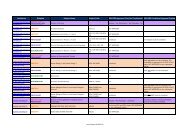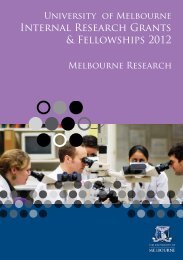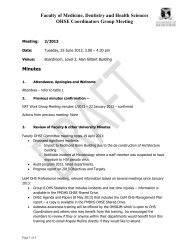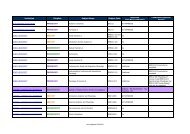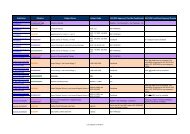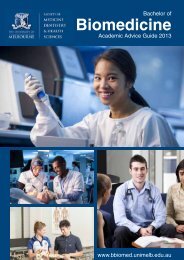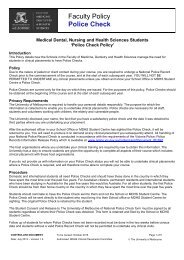A Body of Evidence: An Art Historical perspective on Eighteenth and ...
A Body of Evidence: An Art Historical perspective on Eighteenth and ...
A Body of Evidence: An Art Historical perspective on Eighteenth and ...
You also want an ePaper? Increase the reach of your titles
YUMPU automatically turns print PDFs into web optimized ePapers that Google loves.
eighteenth century many <str<strong>on</strong>g>of</str<strong>on</strong>g> the European art schools were in the process <str<strong>on</strong>g>of</str<strong>on</strong>g><br />
establishing a coherent curriculum <strong>and</strong> the formalised study <str<strong>on</strong>g>of</str<strong>on</strong>g> anatomy became<br />
an integral part <str<strong>on</strong>g>of</str<strong>on</strong>g> the educati<strong>on</strong> <str<strong>on</strong>g>of</str<strong>on</strong>g> a developing artist. This central part <str<strong>on</strong>g>of</str<strong>on</strong>g> an<br />
artist’s educati<strong>on</strong> required models that showed the human muscular system.<br />
These models, know as écorché models, show flayed men, stripped back to reveal<br />
their muscles displayed through dynamic poses. Often beautifully rendered <strong>and</strong><br />
sometimes cast in br<strong>on</strong>ze, these models provided an intermediate stage for artists<br />
to create paintings <strong>and</strong> underst<strong>and</strong> the body. 85<br />
Ecorché models were initially produced during the renaissance by such artists as<br />
Ludovico Cigoli (1559 –1613) <strong>and</strong> became particularly popular both in art schools<br />
<strong>and</strong> medical schools during the eighteenth <strong>and</strong> early nineteenth centuries. 86<br />
<str<strong>on</strong>g>An</str<strong>on</strong>g>thea Callen argues that during the nineteenth century in Paris there was a<br />
substantial cross-pollinati<strong>on</strong> between the disciplines <str<strong>on</strong>g>of</str<strong>on</strong>g> art <strong>and</strong> medicine since<br />
the anatomists who taught at the medical school <str<strong>on</strong>g>of</str<strong>on</strong>g>ten also lectured in the art<br />
school. 87 The crossover <str<strong>on</strong>g>of</str<strong>on</strong>g> teachers between the two disciplines would have<br />
influenced the form <str<strong>on</strong>g>of</str<strong>on</strong>g> the models so as to make them relevant both to artists<br />
studying the muscular <strong>and</strong> skeletal systems <strong>and</strong> to medical students learning<br />
each muscle’s group <strong>and</strong> functi<strong>on</strong>.<br />
85 Elkin, 1999, p. 134.<br />
86 Kemp <strong>and</strong> Wallace, 2000, p. 78.<br />
87 Callen, 1997, p. 24.



